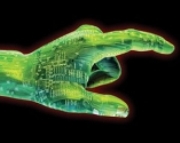Sep 15 2010
The Neurophotonics Research Center, led by the Southern Methodist University (SMU) researchers, will design a two-way fiber optic link between peripheral nerves and prosthetic limbs.
 Connection of brain signals to robotic limbs
Connection of brain signals to robotic limbs
The fiber-optic communication, upon successful completion, will allow seamless signal transmission between artificial limbs and the brain, enabling freedom of movement to amputees and injured soldiers.
The main objective of the center is to develop a fiber link that is compatible with living body tissue. The tissues will link computer technologies to the nervous system via numerous sensors integrated in a single fiber. The immune system will not destroy or reject the fiber optic technology compared to other experimental electronic nerve metal interfaces.
The Neurophotonics Research Center’s partners also foresee man-to-machine applications that could extend beyond the prosthetics, and may lead to medical advancements like implants for patients with spinal cord injuries, neuro-modulators for chronic pain, and brain implants for tremor control.
A Department of Defense initiative has funded the research program.